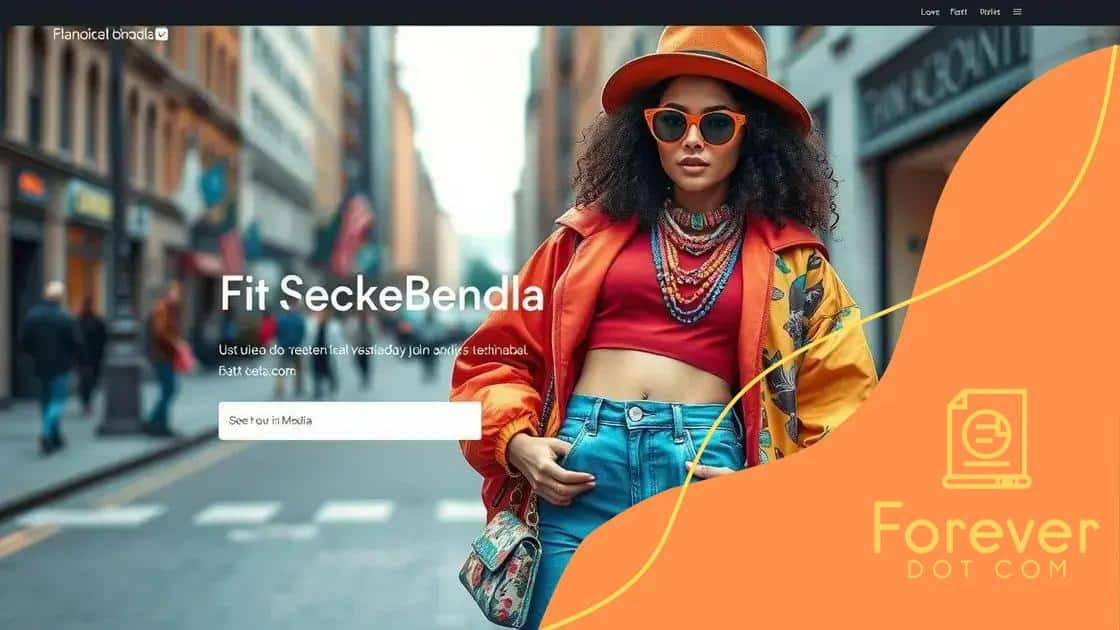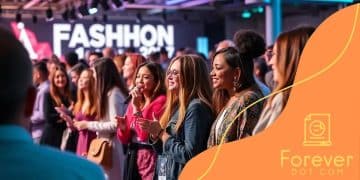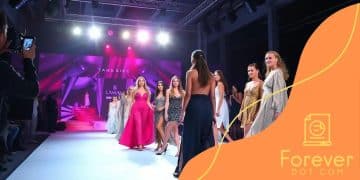The rise of influencer models in fashion campaigns

The rise of influencer models in fashion campaigns reflects a shift toward authenticity and diversity, leveraging engaging content to connect brands with a targeted audience in a rapidly evolving digital landscape.
The rise of influencer models in fashion campaigns has transformed the fashion landscape in recent years. Have you noticed how brands are increasingly partnering with social media personalities? This shift not only enhances brand visibility but also connects with audiences on a more personal level.
Understanding influencer marketing
Understanding influencer marketing is essential in today’s digital landscape. Influencers are individuals who have built a reputation for their knowledge or expertise in a particular niche. They use their platforms, such as social media, to engage with audiences and promote products or services effectively.
Many brands collaborate with influencers to enhance their visibility. This strategy allows companies to reach targeted demographics more effectively than traditional advertising methods. Notably, influencer marketing often leads to higher engagement rates.
Why Influencer Marketing Works
There are several reasons why influencer marketing has become so impactful:
- Authenticity: Influencers build trust by sharing genuine experiences with products.
- Targeted Audience: Brands can select influencers who appeal to specific demographics.
- Engagement: Audiences are often more receptive to recommendations from trusted figures.
- Cost-Effectiveness: Collaborating with influencers can yield better returns on investment compared to traditional advertising.
Moreover, influencers often create engaging content that resonates well with their followers. This content can vary from photos and videos to blog posts, showcasing products in a relatable setting. As a result, brands often benefit from increased exposure and sales.
It’s important for brands to choose the right influencer, taking into account their audience and the content they produce. The relationship between the brand and the influencer should feel organic to ensure authenticity. When this synergy exists, the outcomes tend to be mutually beneficial.
As the influencer marketing landscape continues to evolve, brands must stay informed about the latest trends to harness its full potential. Developing partnerships with influential figures can provide a significant advantage in the competitive fashion industry.
The impact of social media on fashion
The impact of social media on fashion is profound and continues to shape trends and consumer behavior. In recent years, platforms like Instagram and TikTok have become essential for fashion brands to showcase their styles and engage with their audience.
Many designers and retailers now rely on social media for marketing and brand awareness. It is not just about selling products; it’s about creating a community around style and fashion. Consumers today follow brands and individuals who reflect their personal aesthetic. This shift in dynamics allows for more authentic connections.
Key Influences of Social Media
Social media has revolutionized the way we experience fashion in various ways:
- Instant Accessibility: Trends can emerge and spread worldwide in a matter of hours.
- Consumer Engagement: Followers can comment, share, and interact with brands, providing real-time feedback.
- Diverse Representation: Brands have the opportunity to feature models of all backgrounds, resonating with broader audiences.
- Influencer Collaboration: Fashion influencers play a key role in promoting brands, often shaping trends directly.
Additionally, the rise of influencers has given rise to new fashion icons. People no longer solely rely on traditional runways for inspiration. Instead, they look to their social media feeds for ideas on how to style their outfits. Social media also encourages experimentation, allowing users to showcase their unique styles.
This visual platform creates a space where individuals share personal fashion stories, blending fashion with social commentary. As a result, brands must adapt their strategies to resonate with these digital communities. Authenticity and relatability have become vital; consumers appreciate brands that speak to their values and lifestyles.
The connection between fashion and social media continues to deepen, influencing everything from trend forecasting to product launches. Understanding this dynamic will be crucial for any brand looking to thrive in the modern market.
Choosing the right influencer for campaigns

Choosing the right influencer for campaigns can make all the difference in the success of a fashion brand’s marketing strategy. The right influencer can help brands connect with their target audience and enhance their credibility.
When selecting an influencer, brands need to consider several factors. It’s not just about follower count; engagement and authenticity are crucial. Brands should look for influencers who genuinely align with their values and aesthetics.
Key Factors to Consider
Here are some important aspects to evaluate when choosing an influencer:
- Relevance: Ensure the influencer’s content aligns with your brand’s image and target audience.
- Engagement Rate: Look for influencers who have a high level of interaction with their followers, indicating they are heard and trusted.
- Authenticity: Influencers who are genuine in their endorsements tend to have more influence over their audience.
- Content Quality: Assess the quality of the influencer’s visuals and captions, as this reflects their professionalism.
In addition to these factors, it’s essential to understand the influencer’s audience demographic. Brands should ask if the influencer’s followers match their target market. This alignment increases the likelihood of campaign success.
Furthermore, establishing a personal connection with the influencer can yield better results. Taking time to communicate openly about campaign goals and expectations can foster a productive partnership. Influencers are more likely to produce content that truly resonates with their followers when they feel valued and understood.
As the marketing landscape evolves, the importance of strategic influencer partnerships will continue to grow. Fashion brands that prioritize the right influencers will see enhanced brand awareness and increased sales.
Case studies of successful collaborations
Case studies of successful collaborations provide insightful examples of how brands can effectively partner with influencers. These real-life stories showcase the power of strategic collaborations in driving brand awareness and sales.
One notable example is the partnership between a popular sneaker brand and a well-known fashion influencer. This collaboration not only highlighted the influencer’s unique style but also showcased the brand’s latest collection. The campaign included eye-catching visuals and engaging content, which dramatically increased the brand’s reach and engagement rates.
Collaboration Highlights
Successful collaborations often share common elements:
- Clear Objectives: Both parties have defined goals for the collaboration, such as increasing sales or enhancing brand visibility.
- Creative Freedom: Influencers are given the flexibility to express their creativity, making the content feel authentic to their followers.
- Engagement Strategies: Campaigns often include interactive elements like contests or giveaways to boost audience participation.
- Compelling Storytelling: Effective collaborations tell a story that resonates with audiences, connecting them on an emotional level.
Another example is a luxury fashion brand that collaborated with multiple micro-influencers. By partnering with various voices, the brand was able to reach a diverse audience. Each influencer shared tailored content that highlighted how the products fit into their daily lives. This approach not only enhanced the brand’s relatability but also fostered a sense of community among followers.
It’s evident that collaborations rooted in authenticity and strategic planning yield impressive results. The best outcomes arise when brands and influencers work together to create memorable experiences that connect deeply with their audiences. As the fashion industry grows, these case studies will serve as valuable lessons for future partnerships.
Future trends in influencer modeling
Future trends in influencer modeling are evolving rapidly as the fashion industry adapts to digital changes. With the rise of social media and technology, influencer modeling is becoming more dynamic and integrated into marketing strategies.
One key trend is the increasing importance of authenticity. Audiences now value genuine interactions over overly polished content. This shift leads brands to seek influencers who can present products in a more relatable manner. Influencers who share personal stories about their experiences with a product can create a stronger connection with their followers.
Diversity and Inclusivity
Another trend is the focus on diversity and inclusivity in influencer collaborations. Brands are recognizing the need to reflect a broad range of voices and body types. This approach not only resonates with a wider audience but also promotes a positive image in the fashion industry.
- Representation: Collaborating with influencers from different backgrounds helps brands connect with various demographics.
- Body Positivity: Including influencers of all sizes challenges traditional beauty standards and encourages self-acceptance.
- Cultural Sensitivity: Influencers who understand and respect cultural differences can foster trust and loyalty among their followers.
Moreover, the use of technology in influencer marketing is on the rise. Virtual influencers and AI-generated models are making their mark. These digital personas can engage audiences without the constraints of traditional modeling. Brands can use virtual influencers to create innovative campaigns that captivate tech-savvy consumers.
The integration of augmented reality (AR) and virtual reality (VR) is another exciting development. Brands may incorporate AR to allow customers to virtually try on clothes while influencers showcase these products in creative ways. This immersive experience can enhance customer engagement and drive sales.
Overall, the future of influencer modeling looks promising as brands adapt to these trends. Emphasizing authenticity, diversity, and technology will shape the industry, making influencer collaborations more relevant and impactful.
FAQ – Frequently Asked Questions about Influencer Marketing in Fashion
What is influencer marketing in fashion?
Influencer marketing in fashion involves partnering with individuals who have a significant social media following to promote clothing and accessories, leveraging their audience’s trust.
How do I choose the right influencer for my brand?
To choose the right influencer, consider factors like relevance to your brand, engagement rates, authenticity, and the quality of their content.
What are the key benefits of using influencers in fashion campaigns?
Using influencers can increase brand visibility, enhance authenticity, and connect with specific demographics effectively, leading to higher engagement and sales.
What trends are shaping the future of influencer marketing?
Future trends include a focus on authenticity, diversity in representation, the use of technology like AR, and the demand for genuine connections with audiences.






